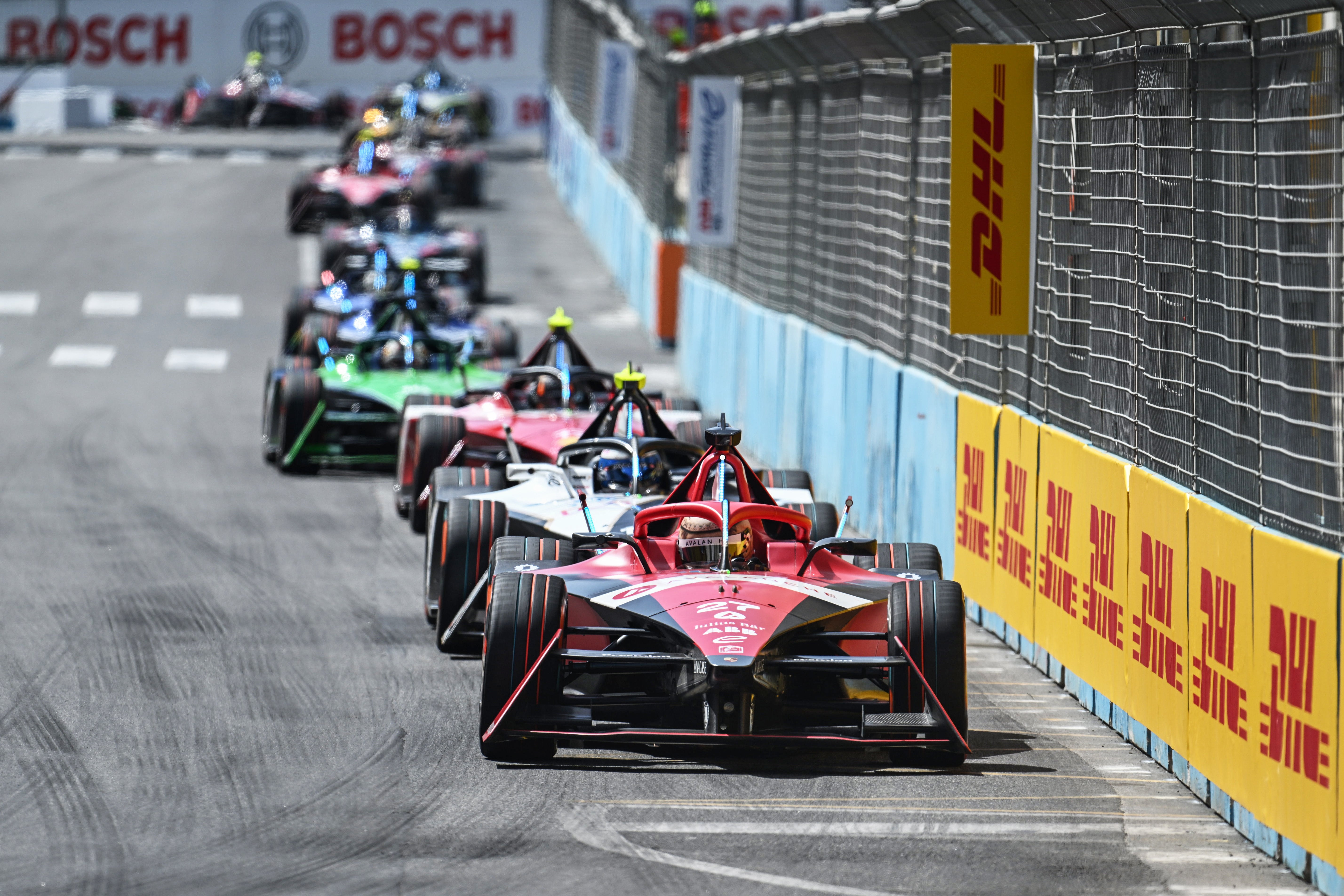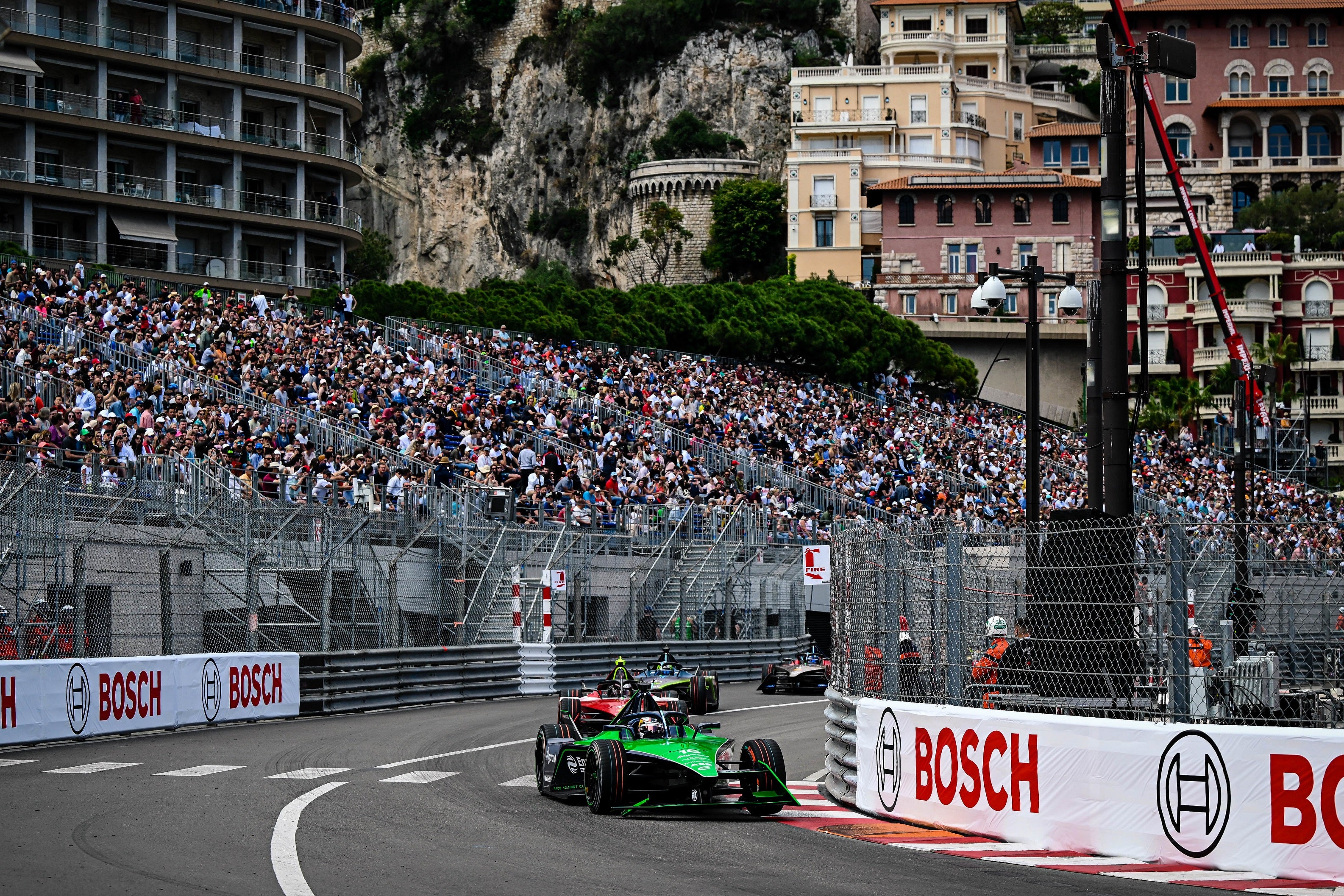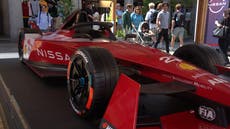How ‘incredible technology’ has taken one team to the brink of a world title – and why road cars will benefit
Exclusive interview: Envision team boss Sylvain Filippi talks to The Independent ahead of the Formula E season finale

The progress from one year to another can bring change and challenge in any sporting environment, but in Formula E it has been more of a quantum leap.
A brand new third-generation electric race car – the Gen3 – has been on show all season long, from the opener in Mexico back in January through to this weekend’s finale in London.
Increasing electric mobility and sustainability are the two broad spectrum keys behind Formula E’s existence, but add in the ever-growing desire for elite competition and it was always set to be the case that this year’s vehicle was going to produce something special. Back in December, as the 11 teams in the championship conducted preseason testing, Envision team boss Sylvain Filippi told The Independent that the “rapid” advancement from a technical perspective meant “nearly no energy loss between battery to wheel”; while this is a big deal for motorsports, the manufacturers involved means the data inevitably and eventually feeds back into the commercial world too.
Seven months on, Filippi says the Gen3 has been a resounding success – and no wonder, given his team are two races away from being crowned world champions.
“We knew the car was insanely complex - that’s the whole point, to push the technology. The dual powertrain gives us a much more powerful, much more efficient car,” he said to The Independent this time around, ahead of the London E-Prix.
“The front powertrain is used for energy regeneration too and gives a huge amount of braking force – so we hardly use the brakes in racing. The slowing down is from [energy] regeneration – it’s incredible technology. This will make its way to road cars in the next few years and will most likely become emergency brakes. That will mean you regen energy and that lets you go further. Across a race in Formula E, about 40 per cent of the energy we use is generated by the car itself.”

It isn’t difficult to see why such efficiency is important from a racing perspective: there are plans to have a mid-race recharge in future seasons, perhaps next year, but right now it’s one battery for one race. If a driver drains his energy levels, he cannot compete.
Thus, regeneration is a critical part of racing strategy, as well as knowing when to go full-throttle with pace: it’s not a linear pattern in terms of how much regeneration you get at each speed level. Much more pace gives exponentially more regen.
Naturally, drivers and teams adapted to the new car at different levels, with Envision’s Nick Cassidy enjoying a sensational middle third of the season where he won twice and took five podium spots from six races. Misfortune in Rome last time out means he needs a near-perfect double-header weekend in London to catch the leader, Jake Dennis, but pooling Cassidy’s points haul with that of teammate Seb Buemi means Envision lead the team standings by 14 points ahead of Porsche.
The plan is for more of the same, says Filippi, rather than any dramatic changes to propel Cassidy back into title contention. After all, if he does well in more routine fashion, the team also increases their chances of a title.
“Some teams peaked earlier but reached a plateau. We keep optimising and we’ve kept improving,” he explained. “We’ve been super fast in the last few races, developed further our platform which had more potential than others and we’ve kept our race pace on any type of track.

“Goal number one is to score the maximum points each race day so we don’t adapt our strategy beforehand.
“If we have to make strategy calls during the race, especially Sunday, we’ll do that – our systems will tell us in real time where we are and since we want Nick to win the championship, that would also help the team in that title race too.
“All the work has been on simulation work at Silverstone and then it’s about emphasis on qualifying because it’s difficult to overtake in London. Then we’ll see where we are Sunday evening.”
Celebrations are on hold for now, then, as it could be a double win...or nothing at all. Formula E has a habit of providing the most unexpected of twists and turns, in enormous current contradiction to a more established rival in the motorsport world – Formula One. Whether the all-electric series gets to that level of support and success remains to be seen and is a discussion for next year and beyond.
After all, just as with technology as a whole, the FE ecosystem continues to progress, push boundaries and improve.
Tenders for Gen4 partnerships are already underway – chassis and battery suppliers, tyre types and technical solutions – but at the same time, Gen3.5, a mid-series update to the present car, will come into force for the season after next.
For now, it’s full focus on finishing season nine and the debut campaign of the Gen3 car – with Envision still hoping to end the weekend successful on at least one front.






Join our commenting forum
Join thought-provoking conversations, follow other Independent readers and see their replies
Comments